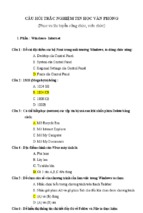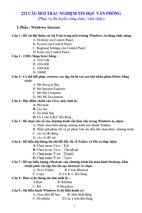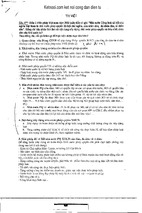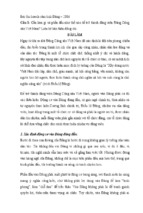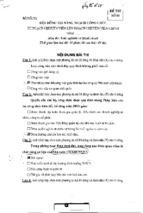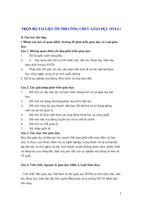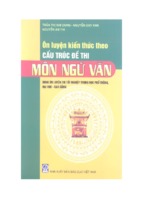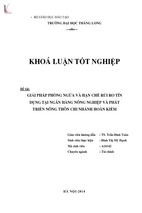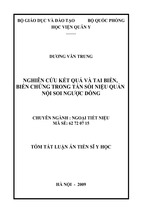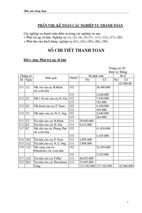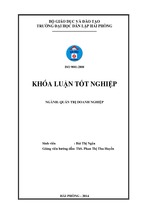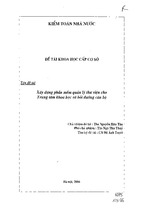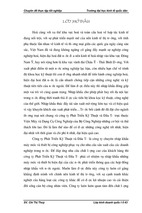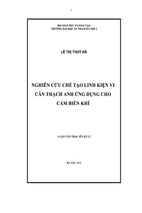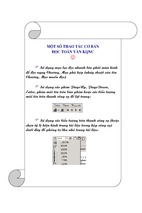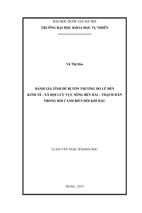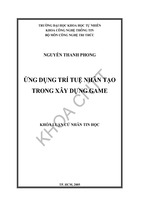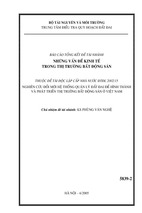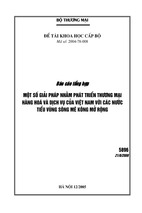The notion of “natural kinds” has been central to contemporary
discussions of metaphysics and philosophy of science. Although
explicitly articulated by nineteenth-century philosophers like Mill,
Whewell, and Venn, it has a much older history dating back to Plato
and Aristotle. In recent years, essentialism has been the dominant
account of natural kinds among philosophers, but the essentialist
view has encountered resistance, especially among naturalist metaphysicians
and philosophers of science. Informed by detailed examination
of classification in the natural and social sciences, this book
argues against essentialism and for a naturalist account of natural
kinds. By looking at case studies drawn from diverse scientific disciplines,
from fluid mechanics to virology and polymer science to
psychiatry, the author argues that natural kinds are nodes in causal
networks. On the basis of this account, he maintains that there can
be natural kinds in the social sciences as well as the natural sciences.
NATURAL CATEGORIES AND HUMAN KINDS
The notion of “natural kinds” has been central to contemporary
discussions of metaphysics and philosophy of science. Although
explicitly articulated by nineteenth-century philosophers like Mill,
Whewell, and Venn, it has a much older history dating back to Plato
and Aristotle. In recent years, essentialism has been the dominant
account of natural kinds among philosophers, but the essentialist
view has encountered resistance, especially among naturalist metaphysicians and philosophers of science. Informed by detailed examination of classification in the natural and social sciences, this book
argues against essentialism and for a naturalist account of natural
kinds. By looking at case studies drawn from diverse scientific disciplines, from fluid mechanics to virology and polymer science to
psychiatry, the author argues that natural kinds are nodes in causal
networks. On the basis of this account, he maintains that there can
be natural kinds in the social sciences as well as the natural sciences.
mu h a m m a d a li k ha li d i is Associate Professor of Philosophy at
York University, Toronto.
NATURAL CATEGORIES AND
HUMAN KINDS
Classification in the Natural and Social Sciences
MUHAMMAD ALI KHALIDI
cambridge university press
Cambridge, New York, Melbourne, Madrid, Cape Town,
Singapore, São Paulo, Delhi, Mexico City
Cambridge University Press
The Edinburgh Building, Cambridge cb2 8ru, UK
Published in the United States of America by Cambridge University Press, New York
www.cambridge.org
Information on this title: www.cambridge.org/9781107012745
© Muhammad Ali Khalidi 2013
This publication is in copyright. Subject to statutory exception
and to the provisions of relevant collective licensing agreements,
no reproduction of any part may take place without
the written permission of Cambridge University Press.
First published 2013
Printed and bound in the United Kingdom by the MPG Books Group
A catalogue record for this publication is available from the British Library
Library of Congress Cataloging-in-Publication Data
Khalidi, Muhammad Ali, Professor.
Natural categories and human kinds : classification in the natural and
social sciences / Muhammad Ali Khalidi.
pages cm
Includes bibliographical references and index.
isbn 978-1-107-01274-5 (Hardback)
1. Categories (Philosophy) 2. Classification. I. Title.
bd331.k43 2013
001.010 2–dc23
2012044074
isbn 978-1-107-01274-5 Hardback
Cambridge University Press has no responsibility for the persistence or
accuracy of URLs for external or third-party internet websites referred to
in this publication, and does not guarantee that any content on such
websites is, or will remain, accurate or appropriate.
For Diane,
one of a kind,
and Layla,
in a category by herself
Contents
List of figures
Preface
page viii
ix
1 Metaphysical Realism and essentialism about kinds
1
2 The naturalness of kinds
42
3 Kinds in the special sciences
82
4 Kinds in the biological and social sciences
125
5 Kinds of natural kinds
166
6 Kinds naturalized
201
Bibliography
Index
231
241
vii
Figures
3.1 Crosscutting classifications of atoms by atomic number
and mass number (and pattern of decay)
3.2 Crosscutting classifications of stars according to spectral
type and luminosity
3.3 Crosscutting classifications of fluid samples according to
chemical kinds and fluid mechanical kinds
3.4 Crosscutting classifications of persons according to
psychological kinds and neural kinds
5.1 Causal relationships among some of the properties
associated with the kind polymer
5.2 Causal relationships among the properties associated with
the kind cancer cell
viii
page 116
117
118
120
174
185
Preface
As an undergraduate majoring in physics in Beirut, Lebanon, I once came
across a smartly illustrated volume by Philip Morrison and Phylis Morrison, entitled Powers of Ten. Intriguingly subtitled, “A Book About the
Relative Size of Things in the Universe and the Effect of Adding Another
Zero,” it was a photographic journey through 42 orders of magnitude,
from the scale that corresponds to the size of the observable universe (1025 m)
to the scale of elementary particles (10�16 m). There was a familiar scene
depicted somewhere in between these two extremes, on a scale of the order
of 1 m, of a woman and a man picnicking in a park in downtown Chicago.
The book zoomed out from the picnic to the city, continent, planet, solar
system, galaxy, and beyond, and then zoomed in to the cells in the man’s
hand, to the molecules and atoms constituting them, and eventually to the
quarks inside the protons and neutrons in the nuclei of the atoms. It was
bracing to experience the universe as a series of logarithmic steps from the
inconceivably large to the unimaginably small. This picture of the world,
which is the one conveyed to us by modern science, suggests realms of
existence arranged in levels, from smallest to largest. But these are not
self-contained, compartmentalized levels like the floors in an apartment
building, since there are intricate relations and interactions between the
levels, or domains, as I shall call them later in this book. Additionally, the
domains are not discretely arranged in a hierarchy. Much of the universe is
a jumble of domains, some coexisting at the same spatiotemporal scale and
within the same regions of space-time and others overlapping partially, or,
to use a term that I have used elsewhere, “crosscutting” each other.
Modern science has evolved an array of disciplines, subdisciplines, and
interdisciplinary research programs to study this complex multiplicity,
each with its toolkit of categories, generalizations, and methods. This book
is about the assortment of categories that scientists have devised to study
the multifaceted nature of reality, and specifically which of these categories
are valid or, to use the philosophical jargon, correspond to ‘natural kinds’.
ix
x
Preface
Many philosophers favor a picture, which may be as old as Aristotle, in
which there is a relatively small set of privileged categories, and according
to which each individual object in the universe belongs properly to one
category, which conveys its essence. Essentialism, which may have a bad
name in the culture at large, is alive and well in academic philosophy
departments, though many of its proponents would deny that the philosophical doctrine corresponds to the set of popular ideas that bear the same
name. Be that as it may, I will argue that the central claims of philosophical
essentialism have either not been adequately justified or are at variance
with what modern science tells us. Philosophical doctrines should not find
themselves out of step with the scientific worldview – at least that is what a
naturalist stance in philosophy would recommend. Some other philosophers, and many academics outside of philosophy departments, tend to
think that the unfeasibility of essentialism is glaringly obvious. They may
then go on to add that it is equally clear that all our categories, whether
scientific or folk, are creative inventions, constructed by human beings to
fulfill various practical and social purposes, but without any serious claim
to drawing an accurate picture of the universe. To think otherwise is to be
guilty of a kind of anthropocentric hubris. This social constructionist
(or conventionalist) position is often pitted against the essentialist position
in a dialogue of the deaf. What I aim to do in this book is to defend
an alternative position that is neither essentialist nor social constructionist
(or conventionalist). It is a naturalist position, which takes into account
the discoveries of various scientific disciplines while at the same time trying
to derive general conclusions about the validity of our categories.
The pigeonholes into which we slot objects in the world are convenient
devices that enable us to fulfill our explanatory needs and predict future
contingencies, but insofar as they succeed in this regard, they do so
precisely because they are attuned to regularities and patterns in the natural
world (including the social world). I will argue that there is no conflict
between the claim that our categories serve our purposes and the claim that
these categories correspond to natural kinds, provided that they serve
genuinely epistemic purposes. Our classification schemes and taxonomic
practices enable us to focus on some features of reality while neglecting
others in order to make sense of these patterns of constancy and change.
The title of this book is a bit perverse. Many readers might instead
expect Natural Kinds and Human Categories. That is because natural kinds,
the types or sorts that the natural world is divided into, are usually
contrasted with human categories, which human beings concoct to serve
their idiosyncratic interests. Kinds of natural objects are also sometimes
Preface
xi
contrasted with the categories into which we divide ourselves and our
conspecifics. So ‘human categories’ can refer either to those categories
devised by humans or to the categories into which human beings are
divided. But this book questions some of the assumptions inherent in
these distinctions. First, as I have already suggested, I will argue that there
is often a close connection between the kinds that are present in the world
and the categories that we invent to understand the world, and second,
I will defend the position that some of the types into which humans are
divided can also be considered natural kinds.
In Chapter 1, I take on two philosophical theses about natural kinds that
have prevailed in the philosophical literature during the past few decades:
metaphysical Realism and essentialism. Metaphysical Realism holds that
natural kinds are a type of universal; that is, that they are abstract entities
over and above their members. This Realist (as opposed to Nominalist)
position considers natural kinds to be more than just collections of
particulars. Though this position may be justified by certain philosophical
considerations, it is of limited use if our aim is to identify which kinds are
natural. That is because it does not give us a way of distinguishing natural
from nonnatural kinds. It simply says that the natural ones correspond,
metaphysically speaking, to universals rather than sets of particulars. This
view is often coupled with essentialism about natural kinds, which continues to be the dominant theory of natural kinds among contemporary
analytic philosophers. Unlike metaphysical Realism, essentialism purports
to put forward criteria for distinguishing natural from nonnatural kinds.
On an essentialist view of natural kinds, each natural kind is associated
with a set of properties that are necessary and sufficient for membership in
the kind, modally necessary (i.e., pertain to the kind or to its members in
every possible world), intrinsic, microphysical, and discoverable by science.
But I argue that the essentialist view of natural kinds is difficult to
maintain in the face of modern science and argue that each of these
conditions except the last is either inadequately supported or out of step
with our current knowledge of the natural world.
Chapter 2 introduces my own positive account of natural kinds,
according to which natural kinds are epistemic kinds, which I develop
by situating it in relation to the views of Locke, Mill, Quine, Dupré, and
Boyd. I find something to agree with in the views of each of these
philosophers, though I also take issue with each of them in some way.
Natural kinds correspond to those categories that enable us to gain
knowledge about reality. Since science is the enterprise dedicated to
acquiring knowledge about the world, natural kinds are identified by the
xii
Preface
various branches of science. Of course, we do not know which categories
will remain part of our settled scientific account of the world, so any
endorsement of the current categories of science is corrigible and subject to
revision in light of future inquiry. This view is defended against the charge
that it is too restrictive as well as the charge that it is too liberal. The charge
that the account is too restrictive concerns the existence of natural kinds
outside of scientific inquiry, corresponding to the folk categories of ordinary language, but I argue that many folk categories are not introduced to
serve an epistemic purpose and should not therefore be taken to provide an
accurate account of the kinds that exist in reality. As for the charge that the
account is too liberal, it amounts to identifying certain further conditions
that natural kinds must satisfy (i.e., in addition to being discoverable by
science). Some of the most prominent of these conditions have already
been examined and dismissed in Chapter 1 in the course of criticizing
essentialism. In this chapter, I discuss other conditions, which are also
found problematic: that natural kinds must be discrete or have sharp
boundaries, that natural kinds cannot crosscut one another but must be
arranged in a nonoverlapping hierarchy, and that each natural kind must
be associated with a causal mechanism that maintains its associated properties in a state of equilibrium, i.e., “homeostatic property clusters” (Boyd
1989, 1991). While Boyd’s account is too restrictive in that it posits a causal
mechanism that keeps all the properties in the cluster in homeostasis, it
does point to the importance of grounding the epistemic efficacy of natural
kinds in causal relations. Building on recent philosophical work, I therefore
propose a “simple causal theory” of natural kinds (Craver 2009). Hence, the
epistemic conception of natural kinds leads naturally to a metaphysical
account in terms of causality.
Chapter 3 defends the view that natural kinds can occur in the ‘special
sciences’ just as much as in the basic sciences. There is a widespread
assumption that the kinds of the special sciences are importantly different
from those of the basic sciences. The former are often thought to be
functional kinds, which are either just multiply realizable disjunctions of
“lower-level” kinds or else reducible to them. Moreover, special-science
kinds and properties are thought not to have causal efficacy since all the
causal work must be done at a “lower level.” It is also sometimes argued
that there are no laws in the special sciences or, if there are, they are very
different from the laws of the nonspecial sciences. I argue against each of
these claims, while focusing on a particular natural kind from fluid
mechanics, Newtonian fluid, and a closely associated property, viscosity.
These arguments provide further support for the “simple causal theory” of
Preface
xiii
natural kinds introduced in Chapter 2. But that theory is challenged by the
claim that natural kinds will be too numerous and ineffectual to be worth
the name. I defend the account against this objection and provide further
evidence for the idea that systems of natural kinds can crosscut one another
because they pertain to different aspects of the natural world. This leads
me to introduce the notion of a scientific domain, which I distinguish from
the more widespread idea of “levels” of reality.
The claim that natural kinds are epistemic kinds implies that categories
derived from the biological and social sciences can also be natural kinds. In
defense of this claim, in Chapter 4, I critically examine several attempts to
distinguish kinds in the natural sciences from those in the biological and
social sciences. Some philosophers think that biological and social kinds
cannot be natural kinds for the very reason that special-science kinds
generally cannot. But others hold that they cannot for other reasons, the
most prominent of which are explored in this chapter, and I argue in each
case that they give us no grounds for thinking that biological and social
kinds cannot be natural kinds. I consider the view that biological kinds are
etiological kinds, individuated by causal history rather than causal powers.
I also examine the distinction between “eternal kinds” and “copied kinds”
(Millikan 1999), the latter being kinds whose members resemble each other
not as a matter of natural law but as a result of a copying process. Then
I counter the view that social kinds are conventional (Searle 1995); though
the most conventional of kinds are not natural kinds, it is clear that many
social kinds are not conventional, or not entirely so. Hacking (1999, 2002)
claims that human kinds can be interactive whereas natural kinds cannot,
but some natural kinds also come into existence as a result of human
intervention and they can interact in various ways with our thoughts and
actions. Finally, Griffiths (2004) holds that at least some social kinds are
normative or evaluative in character, a feature that distinguishes them from
kinds in the natural sciences. However, normativity is by no means a
feature of all social kinds, and when it is, it can be detected. I conclude that
categories in the biological and social sciences are not fundamentally
different from those in the natural sciences and that biological and social
kinds can be natural kinds as well.
Chapter 5 looks at several case studies drawn from a range of sciences in
order to test the claims about natural kinds that I have made so far. In the
spirit of philosophical naturalism, I examine a number of widely accepted
and controversial kinds to ascertain whether they can be considered natural
kinds. The case studies are drawn from basic physics and chemistry
(lithium); chemistry, materials science, and polymer science (polymer);
xiv
Preface
biochemistry, physiology, and virology (virus); physiology, medicine, and
oncology (cancer and cancer cell); and psychiatry and cognitive science
(attentiondeficit/ hyperactivity disorder [ADHD]). These case studies enable
me to corroborate and amplify some of the claims that I make in earlier
chapters and also to further elaborate and illustrate these claims. Though
in all cases, I conclude that the kinds examined are good candidates for
natural kinds, I also encounter some kinds along the way that I argue are
probably not natural kinds.
Finally, in Chapter 6, I attempt to show that this naturalist approach to
natural kinds is compatible with realism about kinds. Though I do not
engage in a full-blown defense of scientific realism (not to be confused
with metaphysical Realism, discussed in Chapter 1), I give some reason for
adopting a realist attitude towards natural kinds. In doing so, I further
clarify the relationship between natural kinds and properties and the role
of causality in the proper characterization of natural kinds. In defending a
realist account of natural kinds, I counter the charge that natural kinds are
determined by our interests or perspective on the world. Though my
account of natural kinds is pluralist and does not set an upper limit on
the number of natural kinds that may exist, it holds that these kinds really
exist in the world. It is common for philosophers to express realism about
kinds in terms of the claim that kinds are human- or mind-independent,
but I reject this way of grounding realism since it threatens to rule out all
psychological and social kinds. More importantly, to be real, a kind need
not be independent of human beings or their minds; it must simply be
manifested in the world (a world that includes the human mind). The surest
way to ensure that our categories identify real kinds is to pursue a scientific
method that serves epistemic purposes. Finally, I relate this discussion to the
“social constructionist” position about categories or kinds; though some
versions of the social constructionist thesis are compatible with my naturalist position, other social constructionist claims are either trivial or false.
******
This book has taken me a few years to write but I have spent many more
years thinking about some of the questions that I address in these pages.
A number of people have helped me think through these issues, often
setting me straight on certain points, indicating the deficiencies of my
arguments, or revealing certain lines of argument that had not occurred
to me. It is difficult to recall all the conversations that I have had over
this period and I am sure I am forgetting to credit some of them, but
I would like especially to acknowledge the help and encouragement of Ian
Preface
xv
Hacking, John Heil, Tom Nickles, and Stephen Stich. I would also like to
thank Bana Bashour and Hans Muller of the American University of
Beirut for inviting me to present some of this work to a conference in
Beirut in May 2011. There, I was very fortunate to receive feedback on an
earlier draft of Chapter 2 from both of them as well as from all the
participants in the conference. My wonderfully supportive colleagues at
York University have also heard me present some of this material and have
been excellent philosophical interlocutors. In addition, I would like to
acknowledge the support of two travel grants from the Social Science and
Humanities Research Council of Canada (SSHRC) and a grant from the
International Conference Travel Fund of the Faculty of Liberal Arts and
Professional Studies at York University, which enabled me to present
portions of this work at three conferences, the Metaphysics of Science
conference (Nottingham, 2009), the Philosophy of Science Association
Biennial Meeting (Montreal, 2010), and the Society for Logic, Methodology, and Philosophy of Science in Spain (Santiago de Compostela, 2012).
Thanks are due to audience members and participants at all three conferences for comments and discussion.
When it comes to more specific debts concerning this book, a number
of people have taken the time to help me with feedback and advice. First,
I would like to thank two anonymous referees for Cambridge University
Press who provided astute comments, constructive criticism, and vital
encouragement. Others who gave me very useful comments are my
students, Rami Elali, who read Chapter 1, and Abigail Klassen, who read
the entire manuscript; I have had stimulating discussions about natural
kinds and social kinds with both of them. I am also grateful to Abigail
Klassen for helping to prepare the index for this book, thanks in part to a
Minor Research Grant from the Faculty of Liberal Arts and Professional
Studies at York University.
Students in two graduate seminars at York University, one on natural
kinds and another on the philosophy of social science, helped me by letting
me try out some of my half-baked ideas. I am also grateful to a graduate
student, Orsolya Csaszar, for valuable research assistance on ADHD, and
to an undergraduate student, Rachelle Innocent, for writing a research
paper on this topic, which helped to acquaint me with the literature on
ADHD and helped me work on section 5.6. Parts of Chapter 1 of this
book, specifically section 1.7, have appeared in a previously published
paper, “The Pitfalls of Microphysical Realism,” Philosophy of Science 78
(2011), 1156–1164. I am grateful to the journal for permission to reprint
portions of that paper.
xvi
Preface
At Cambridge University Press, I would like to express my immense
gratitude to Hilary Gaskin for encouraging me to undertake this project
and for overseeing its early and later stages. Thanks are also due to Anna
Lowe for patience and diligence, especially as two deadlines passed for
delivering the manuscript. My great appreciation also goes to Joseph
Garver for expert copy-editing, and to Thomas O’Reilly for help and
advice during the production stages.
Members of my far-flung extended family have been remarkably indulgent of my foibles and shortcomings while I worked on this project. They
know who they are and how much they mean to me. Finally, I have
dedicated this book to my wife Diane and my daughter Layla because that
is the only way I know to thank them. I did not include my son Zayd in
the dedication, not because I know of some other way to thank him but
because I dedicated an earlier book to him. To paraphrase Oscar Wilde, to
have one book dedicated to you may be regarded as a misfortune, but to
have two looks like carelessness.
chapter 1
Metaphysical Realism and essentialism
about kinds
1.1 kinds of things
We are a classifying species. We recognize not just individuals but kinds of
things, and we sort individuals into kinds. Among the myriad kinds we
identify are protons and antineutrinos, lithium and roentgenium, polystyrene
and DNA, radioactive decay and polymerization, stars and meteorites,
Newtonian fluids and gases, viruses and cancer cells, homologies and larvae,
child abuse and Alzheimer’s disease, hysteria and ADHD, and permanent
residents and refugees. These include kinds of entity or object, process or
state, and so on. In the face of such a proliferation of kinds, philosophers
are prone to ask whether all of them are on a par, or whether some are real
and others merely ersatz, artificial, or nominal. Some philosophers would
regard only a small minority of such groupings as real or natural. They
would claim that the natural kinds are a tiny subset of the kinds that we
have identified in the course of our everyday activities and in the course
of scientific theorizing about the world. On this way of seeing things, not
all categories identified in our natural language, nor even all those featured
in scientific discourse, ought to be taken to pick out real kinds of things.
Many, if not most, are simply convenient groupings, with limited utility
for some purpose or another, but without a claim to “carving nature at its
joints.” This supposed contrast between categories that really correspond
to the divisions in nature and those that are merely useful crutches
designed to enable us to get by in the world (let alone those that are
entirely artificial and fail to serve any practical purpose) is the focus of this
chapter. I intend to examine the various criteria and desiderata that have
been put forward to distinguish natural from artificial kinds, and will try to
determine which of them, if any, should be taken as a mark of the natural.
Consider any set of individuals endowed with various properties,
whether human beings, artifacts, terrestrial organisms, clouds, celestial
bodies, samples of chemical substances, or elementary particles. Each
1
2
Metaphysical Realism and essentialism about kinds
individual in this set will typically have a large number of properties, and
any attempt to systematically describe the whole collection will inevitably
involve sorting individuals into groups. Now imagine that a human
observer, call her Eve, surveys this scene and wonders how she is to make
sense of these individuals, each with its own physical dimensions, spatial
location, trajectory, causal powers, patterns of behavior, and so on. After
a period of close observation, Eve hits upon a system for dividing the
individuals into groups, which helps her make sense of it all, which has
explanatory power, and on the basis of which she is able to make surprising predictions. Her sorting scheme consists of a system of categories,
K1, . . ., Kn, each including a number of individuals among its members,
based on the properties possessed by those individuals. Each of these
categories is associated in her language with a general term; each such
general term picks out a particular kind of individual. If she finds herself
in a philosophical, rather than a purely scientific, mood, she may mull over
a number of questions. Having sorted these individuals into a system of
kinds, she might ask herself the following: Are these the kinds to which
these individuals really belong? Do divisions between the various kinds
correspond to the world’s own divisions, or are they merely a reflection of
my perspective? Moreover, can they be further split into subkinds, or
further lumped into superkinds? Is there a single unique way of sorting
them into kinds, or are there a number of different ways of doing so? If
there is no unique way of doing so, are some systems of kinds privileged
over others, or are they all on a par?
Having formulated these questions and considered them, Eve might
raise a further question: How are we to tell which of these categories really
correspond to the world’s own divisions? Is there some way of doing so
beyond our usual ways of discerning which categories succeed and advance
our knowledge and which do not? It is not as if some categories come
with a further proof of authenticity or a seal of approval that informs us
that they are genuine while the others are not. Thus, Eve may conclude,
the question concerning which kinds are real (or natural) would seem to
reduce to one about which categories figure in our best theories of the
world, or form part of our settled knowledge of nature. It is not that our
best theories and settled knowledge actually determine which kinds exist,
but rather that they serve as the best guide to the existence of the kinds
of things in the world. We have no other way of delineating genuine
groupings from bogus ones, we can imagine Eve concluding. Ultimately,
Eve’s conclusion is the one that I will be arguing for in this book. But in
this chapter I will first examine other proposals for establishing which
- Xem thêm -

